Epidermophtosis of the feet is a fungal disease, which is caused by the pathogens of dermatophytes that settled in the skin of a person, of the genus of trichophones.
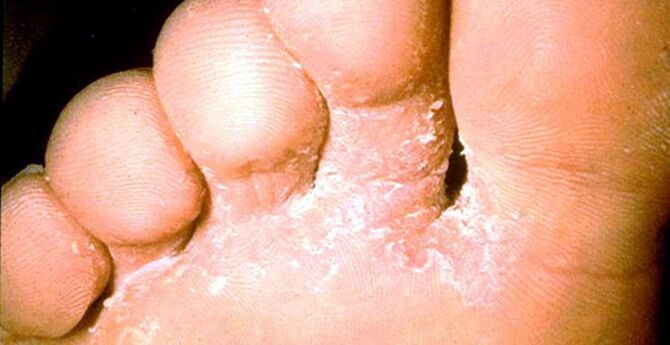
There is a complex infection of nails and skin on the feet and between the fingers of the feet that are interconnected.
The diseases of some professions that are in heat and high humidity, favorable for fungal development are especially susceptible to diseases: these are athletes, miners or people simply do not follow their feet hygiene.
The reasons for appearance
The main condition for the appearance of the disease is the infection of the skin of the legs, that is, the entry of the fungal dispute.This happens in public places or in direct contact with the carrier through personal hygiene products, for example, shoes or socks.
The main places of accumulation of several fungi are public showers, bathrooms, saunas, changing rooms, etc.
In addition, favorable conditions for the development of the fungus must be created, which is facilitated by the following factors:
- greater moisture;
- Leg sweating;
- in the long term with uncomfortable shoes;
- low quality socks or shoes with insufficient ventilation;
- Professional activities (sports, work), when the legs are constantly heat and experience anneks;
- venous thrombosis;
- Diseases of blood vessels;
- diabetes mellitus;
- weakened immunity;
- overwork;
- Stress and excess nervous rays.
The fungus is not always activated when it is put on the feet, since the body has its own protective functions.The disease occurs only in the presence of pathologies.
For example, socks tight blood vessels, and the blood supply level is reduced, or legs are constantly hot with high humidity and skin acidity decreases, creating favorable conditions.
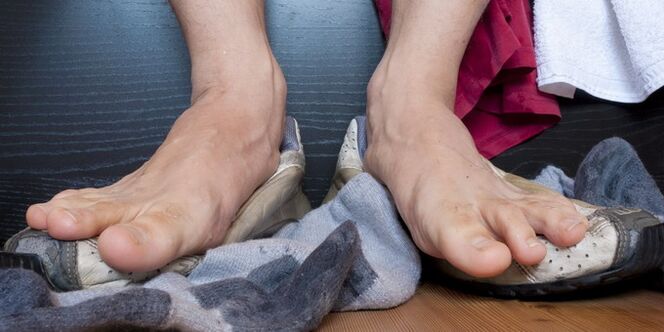
This is also facilitated by stress and excess work that reduces body protection against any pathogen.
Symptoms and fungi stages
The disease is characterized by forms and stages of epidermophtosis.The main characteristic symptoms of all forms are peeling and redness of the skin between the fingers of the feet and feet.There are four stages of the disease:
Erased or soft stage
Among the fingers of the feet, light bulbs of skin cano are observed, the feet are clean.The patient practically does not feel discomfort or other unpleasant symptoms.
Escamosa-Hiperkeratotic stage
At this stage, the disease manifests more clearly.In the phalanges of the fingers and between them, as well as on the sides of the feet, there are stamps of the skin of a brown or bluish dye.
The skin is peeled with dry scales.The patient has increased the dryness of the legs.White and yellow shapes may seem similar to calluses.
The infected places exudate itching.An unpleasant smell comes from the legs.
Intriguing stage
The legs are constantly wet and lovely.Among the fingers of the feet there are similarities of edema.The swelling of white or yellow skin appears.
The skin is peeling on the entire surface of the feet and fingers of the feet.There may be sores, cracks and erosion, which sometimes bleed, if they are damaged.
The patient experiences constant discomfort, itching or weak pain, especially when walking.Skin detachment is significant, as well as stamps.
Dihydrotic stage
Throughout the surface of the feet and between the fingers, formations appear that resemble bubbles.They accumulate a liquid that oozes damage to the bubble walls.
After that, swelling and inflammation of the skin can occur.The feet and fingers constantly bite, and the legs acquire a strong smell of moisture that cannot be suppressed with soap or other means.
Complications
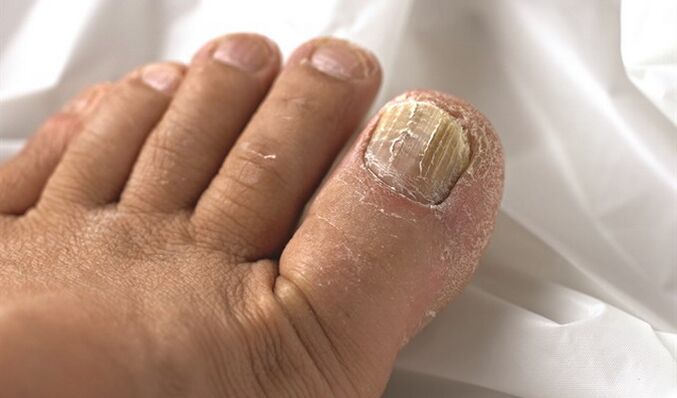
In addition, the disease falls into the nails that become gradually yellow, then deform and exfolian.This happens in each third case of epidermophytic, if it adjusts with the treatment.
In the most advanced cases, the fungus "throws" other parts of the body, causing the appearance of skin spots, an allergic reaction or other pathologies.
Treatment
To treat the disease, you must contact a mycologist.Several tests and studies will be carried out based on which proper treatment will be prescribed.
Therapy aims to destroy the fungus.For this, the funds are used for both internal and premises, in addition, at the same time.
Medications
The treatment of the fungus occurs at home and hard, depending on the stage, from 2 to 3 months to 1 year.To suppress the activity of the fungus from the inside, use the medicine 2-chlorina-4-nitrofenol.
At the same time, affected areas should be treated with local medicines (creams, gels, ointments):
- Clotrimazole.
- Tolnaftat.
- Mikonazole.
- Terbinafina
- Economol nitrate.
- Naftyfin hydrochloride and others.
When purulent secretions and inflammation appear, itraconazole is generally prescribed.A systematic approach allows you to deal more effectively with infection.
The choice of medicines and the treatment course is carried out by the treating doctor depending on the clinical picture.
Popular remedies
Traditional medicine media are used as an additional measure of the fight against fungus, but not independent.
Popular recipes can only help in the initial stages of the disease.Consider some of them:
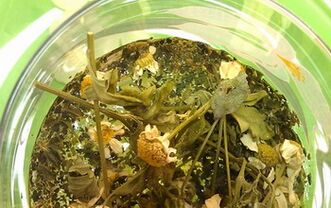
- Vaseline and salicylic acid.For 1 teaspoon of oil gelatin, half of the aspirin or salicylic acid table is taken, mixed and applied to the area between the fingers of the feet, rubbing slightly.This will help stop the propagation of the fungus and relieve unpleasant symptoms.
- A decoction of herbs.The following herbs should be taken that have an antifungal and anti -inflammatory effect: chamomile, horse tail, San Juan and eucalyptus grass.All herbs are taken in equal amounts (1 teaspoon per 0.5 l of water).Water is boiled and boiled for 10 minutes, after which they are also insisted in 30 minutes.In the decoction, the legs shoot, gradually add hot water.
- Sea sea barrel.A cotton swab is moistened in oil, which cleans the affected areas.This is a good antiseptic that relieves pain, itching and inflammation.
- Soda, salt and soap.In a hot water basin, a piece of laundry soap and 1 tablespoon of soft drinks and salt are dissolved.The leg configuration procedure is carried out every day, preferably before bedtime.This will help clean the skin of the keratinized parts and better affect the effectiveness of drugs that penetrate more deeply into the tissues of the fingers and feet.
- Boric acid.For treatment, a solution (2%) of boric acid is used, which cleanses the legs with a cotton swab.This is an antiseptic fungal.However, it must be careful and not carry out the procedure too often so as not to obtain a chemical burning.
Shoes and underwear
In addition to direct treatment, you still need to monitor the condition of shoes and linen.This is important, since therapy may not make sense if it is neglected by hygiene.
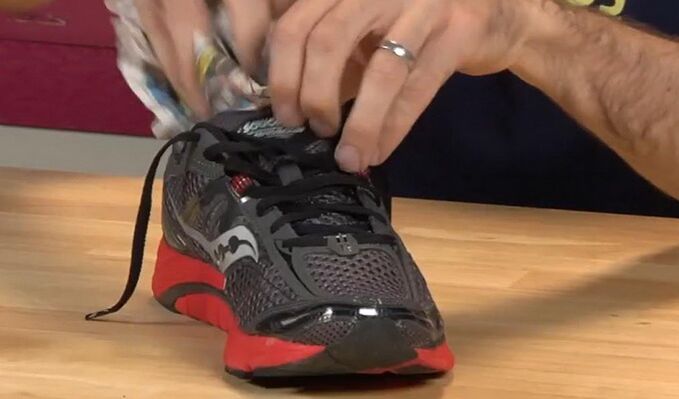
Shoes must be constantly dried and socks can be changed every day.It is useful to treat daily shoes with formaline for disinfection.
After performing water procedures, the legs are thoroughly cleaned with a dry and clean towel, especially between the fingers of the feet.Then, immediately apply medicinal creams or ointments that the doctor prescribed.
With a greater sweating of the legs, a decoction or infusion of oak bark, as well as ordinary vinegar, help.
The main thing is to keep the legs dry, since moisture is a favorable environment for the development of the fungus.
Prevention
There are a series of preventive measures aimed at preventing relapse or infection with a fungus in the legs:
- Wash your legs several times a day, cleaning them;
- You cannot wear socks, shoes or a towel of other people;
- Daily shoes should always dry before using;
- In public places, wear shoes or other shoes, and then use disinfectants to reduce the risk of infection;
- The shoes must be comfortable and not cause sweating of the legs;
- Regularly visit a doctor for preventive exams for any disease;
- eat properly;
- Reduce the use of alcohol and sweet food.
Conclusion
Epidermophosis is a very unpleasant disease, since it ruins the appearance of the legs and causes a strong and unpleasant smell.
The legs are constantly sweat and really begin to stink.This interferes with normal life and fetula a person.

First, the disease affects personal life and, therefore, the treatment must begin with the first symptoms, given the risk of infection with the fungus of others.
In the initial stage, the disease is easily therapy and recovery occurs after a couple of months.However, in an advanced state, this can take a year or more, so it is not necessary to delay.



















